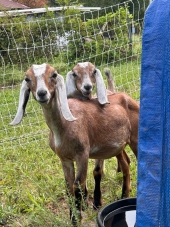




[img]http://i109.photobucket.com/albums/n52/havlik1/permie%20pics2/permiepotrait3pdd.jpg[/img]
"One cannot help an involuntary process. The point is not to disturb it. - Dr. Michel Odent
 1
1








[img]http://i109.photobucket.com/albums/n52/havlik1/permie%20pics2/permiepotrait3pdd.jpg[/img]
"One cannot help an involuntary process. The point is not to disturb it. - Dr. Michel Odent








[img]http://i109.photobucket.com/albums/n52/havlik1/permie%20pics2/permiepotrait3pdd.jpg[/img]
"One cannot help an involuntary process. The point is not to disturb it. - Dr. Michel Odent








[img]http://i109.photobucket.com/albums/n52/havlik1/permie%20pics2/permiepotrait3pdd.jpg[/img]
"One cannot help an involuntary process. The point is not to disturb it. - Dr. Michel Odent




 A British article goes through its characteristics, but doesn't make any reference to toxicity: http://members.lycos.co.uk/WoodyPlantEcology/docs/web-bud.htm
A British article goes through its characteristics, but doesn't make any reference to toxicity: http://members.lycos.co.uk/WoodyPlantEcology/docs/web-bud.htm



 1
1





[img]http://i109.photobucket.com/albums/n52/havlik1/permie%20pics2/permiepotrait3pdd.jpg[/img]
"One cannot help an involuntary process. The point is not to disturb it. - Dr. Michel Odent












[img]http://i109.photobucket.com/albums/n52/havlik1/permie%20pics2/permiepotrait3pdd.jpg[/img]
"One cannot help an involuntary process. The point is not to disturb it. - Dr. Michel Odent








[img]http://i109.photobucket.com/albums/n52/havlik1/permie%20pics2/permiepotrait3pdd.jpg[/img]
"One cannot help an involuntary process. The point is not to disturb it. - Dr. Michel Odent








[img]http://i109.photobucket.com/albums/n52/havlik1/permie%20pics2/permiepotrait3pdd.jpg[/img]
"One cannot help an involuntary process. The point is not to disturb it. - Dr. Michel Odent








[img]http://i109.photobucket.com/albums/n52/havlik1/permie%20pics2/permiepotrait3pdd.jpg[/img]
"One cannot help an involuntary process. The point is not to disturb it. - Dr. Michel Odent




Leah Sattler wrote:
tell me more!





[img]http://i109.photobucket.com/albums/n52/havlik1/permie%20pics2/permiepotrait3pdd.jpg[/img]
"One cannot help an involuntary process. The point is not to disturb it. - Dr. Michel Odent












Bytesmiths wrote:
Not to doubt you, and I have no basis for saying this, but don't intestinal parasites attach to the intestinal wall and suck blood? Now there's a source of oxygen!
I can't imagine how, except for the ruminant's gathering of material, eating contents of the bowels is a net energy gain over simply eating the green material before it gets in the bowels. But perhaps I simply lack imagination...
[img]http://i109.photobucket.com/albums/n52/havlik1/permie%20pics2/permiepotrait3pdd.jpg[/img]
"One cannot help an involuntary process. The point is not to disturb it. - Dr. Michel Odent




 can I have some? its so sad to go out there and see all the goats panting and panting. they look awful to, they just don't eat well in this heat. I have one poor doe due july 28, I wasn't sure till I felt babies yesterday. poor thing. its gonna bee 105 by then.
can I have some? its so sad to go out there and see all the goats panting and panting. they look awful to, they just don't eat well in this heat. I have one poor doe due july 28, I wasn't sure till I felt babies yesterday. poor thing. its gonna bee 105 by then.[img]http://i109.photobucket.com/albums/n52/havlik1/permie%20pics2/permiepotrait3pdd.jpg[/img]
"One cannot help an involuntary process. The point is not to disturb it. - Dr. Michel Odent












[img]http://i109.photobucket.com/albums/n52/havlik1/permie%20pics2/permiepotrait3pdd.jpg[/img]
"One cannot help an involuntary process. The point is not to disturb it. - Dr. Michel Odent
















[img]http://i109.photobucket.com/albums/n52/havlik1/permie%20pics2/permiepotrait3pdd.jpg[/img]
"One cannot help an involuntary process. The point is not to disturb it. - Dr. Michel Odent




















 (I killed the last one with kindness) I will use that pic as inspiration to NOT water it when get the urge
(I killed the last one with kindness) I will use that pic as inspiration to NOT water it when get the urge 
[img]http://i109.photobucket.com/albums/n52/havlik1/permie%20pics2/permiepotrait3pdd.jpg[/img]
"One cannot help an involuntary process. The point is not to disturb it. - Dr. Michel Odent




[img]http://i109.photobucket.com/albums/n52/havlik1/permie%20pics2/permiepotrait3pdd.jpg[/img]
"One cannot help an involuntary process. The point is not to disturb it. - Dr. Michel Odent








 I was actaully thinking of keeping it in the pot today. I have dug up several plants I put in a potted them. the soil is so impossible here they would surely have croaked (and almost did) several coral bells that were about on there last leg, and a scabiosa that although was surviving was not happy. I see now why the front of the house is planted with almost nothing but ivy and boxwoods. Idon't want to put them waaay down at the garden so maybe I will keep them potted so I can enjoy them on the porch.
I was actaully thinking of keeping it in the pot today. I have dug up several plants I put in a potted them. the soil is so impossible here they would surely have croaked (and almost did) several coral bells that were about on there last leg, and a scabiosa that although was surviving was not happy. I see now why the front of the house is planted with almost nothing but ivy and boxwoods. Idon't want to put them waaay down at the garden so maybe I will keep them potted so I can enjoy them on the porch.[img]http://i109.photobucket.com/albums/n52/havlik1/permie%20pics2/permiepotrait3pdd.jpg[/img]
"One cannot help an involuntary process. The point is not to disturb it. - Dr. Michel Odent

|
Why is your dog always so ... moist? Check this tiny ad for some sort of cure:
The new kickstarter is now live!
https://www.kickstarter.com/projects/paulwheaton/garden-cards
|





